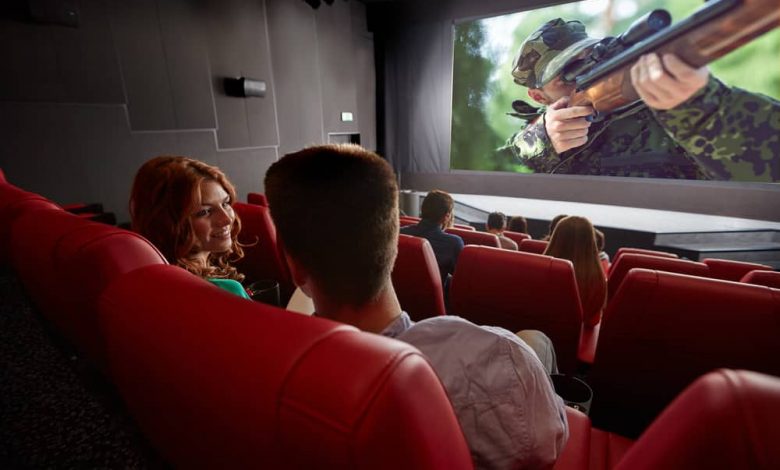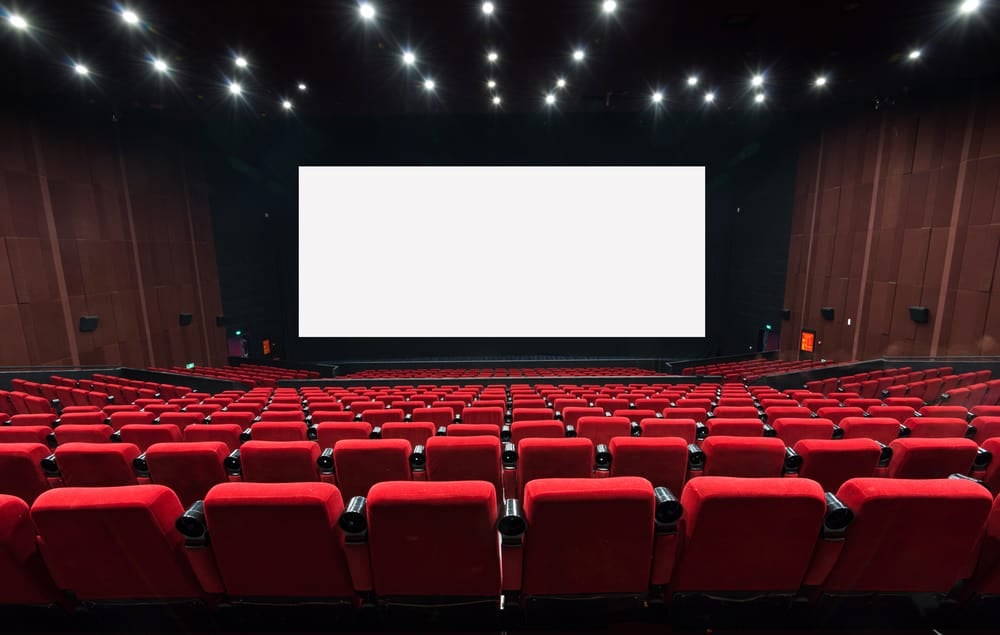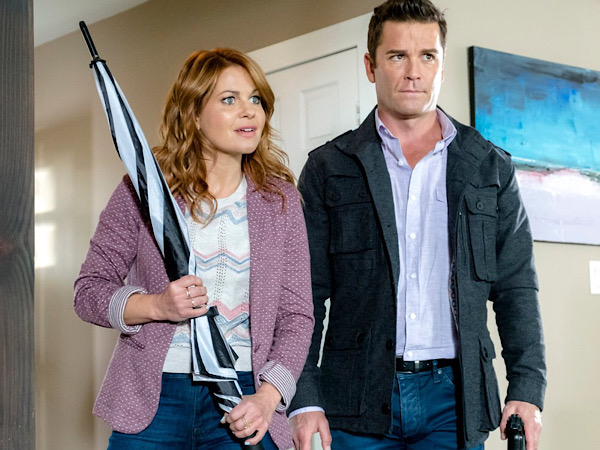How Long Do Movies Stay In Theaters? (Updated 2022)


the movies free us from the stress of everyday life and transport us to gotham, hogwarts or germany in 1939 for a couple of hours.
Unfortunately, not all of us can put life on hold when a movie first comes out.
If it takes you several weeks to get to the theater, you may be wondering if you missed the chance to see the movie you wanted.
We cover how long most movies stay in theaters so you can plan accordingly.
How long do movies stay in theaters?

Most mainstream movies stay in theaters for an average of four weeks.
some only last about two weeks and others much longer.
Theater showing times are not scheduled in advance (although theaters and movie executives may try to make an educated guess for planning purposes).
theaters only have limited space.
After ticket sales for a particular movie start to decline, the theater must swap out the older movie for a newer, more popular movie if it wants to stay in business.
long-form movies
some movies were so successful that they stayed in theaters much longer than anyone expected:
- rocky horror picture show: 2000+ weeks
- e.t: 52+ weeks
- star wars: 44 weeks
- back to the future: 37 weeks
- beverly hills police : 30 weeks
factors involved in the time a film remains in the theater

Some people just run a movie theater in overly simplified terms of supply and demand, but there are numerous factors that work together to determine the theater stay for a particular movie.
1. popularity

First of all, you can estimate how long a movie will be shown in theaters based on its popularity.
the more people want to see a movie and the more people pay for movie tickets, the longer it will last.
To determine the popularity of a movie, all you have to do is go online to see what movies people are talking about.
Sometimes movie makers tell us which movies are popular before we know it with clever marketing campaigns and ad saturation.
Other times, the popularity comes almost exclusively from the director or the cast.
People will get excited about a new Tarantino movie or a new movie starring their favorite actor, even if they know nothing about the movie or hear that it wasn’t very good.
2. audience reception

It is not enough that the film is simply popular.
Movies tend to work best when people really like the movie.
people provide reviews by word of mouth.
They also provide large-scale online reviews.
You might not necessarily trust your friend’s opinion, but if 5,000 people with rotten tomatoes agree a movie isn’t that great, you can choose to wait until it opens on a streaming platform.
professionals also provide their opinions in the form of reviews.
Viewers may be more inclined to watch a film that has rave reviews from critics and is rumored to be a contender come awards season.
however, the critics hated the national treasure but loved the origin, so what do they know?
3. gender

Cinemas offer a unique viewing experience thanks to immersive display and surround sound audio.
However, have you ever heard someone refer to one movie as a movie you “want to see in theaters” and another movie as “one you can watch at home”?
Many times, the distinction is based on the genre of the film.
Cinema comforts are particularly useful when applied to action movies.
Action movies, including superhero movies, benefit from the enhanced effects of cinema.
Not only will you see the car chase, but you’ll also hear every move and feel the ground shake during a collision.
Theatrical output can make even bad movies fun to watch thanks to sensory overload you can’t get in the comfort of your own home.
children’s movies also often benefit from theater, especially if they incorporate 3d technology.
On the other hand, many people don’t feel the need for the big screen and theater sound system when watching a romantic drama or comedy, unless they really want to see it as soon as it’s released.
4. competition

Timing is everything in the film industry.
Films should be released at a different time than the stiff competition.
If another highly anticipated movie is released at the same time, it can force viewers to choose which movie they want to see when, if they were released a month apart, the viewer could have gone to both.
Shawshank Redemption, arguably one of the greatest movies of all time, was a relative box office flop as it struggled to compete with Forrest Gump.
Fortunately, the film managed to grow in popularity over the years, although more people saw it on DVD and television than in the cinema.
5. mpaa rating

The Motion Picture Association of America has an entire rating system for a movie’s content, and the rating can affect how long the movie stays in theaters.
we all know the ranking system:
- g: general public. all ages welcome.
- pg: Parental supervision suggested. some materials may not be suitable for children.
- pg-13: Parents are strongly cautioned. some materials may be inappropriate for children under 13.
- r: Restricted. children under 17 years of age require a parent or legal guardian to accompany them.
- nc-17: minors under 17 years of age are not admitted.
While many of us love a little blood and gore in our theater, going up to an R rating from a pg-13 rating severely limits the number of people who can see the movie.
a smaller target audience generally means fewer ticket sales.
Many executives work to get a more favorable rating in an effort to increase box office earnings, which may mean some scenes are cut or cleaned up (although there are exceptions, such as deadpool).
6. theater prices

movie ticket prices have risen significantly over the years.
the average ticket price in 2001 was $5.66 and increased to $9.77.
Note that the average includes second rate theaters and small theaters in rural areas.
If you think those averages seem low, you’re probably looking at the price at your local first-run theater in a nice suburb.
Most theaters make a third of their profits from concessions.
The other two-thirds come from ticket prices.
With the rising price of movies, fewer people want to go to the movies, which means movies are showing less than during the heyday of cinema.
7. theater overheads

Theaters must pay a considerable cost to show a particular film.
sometimes they pay the cost up front and other times they do it based on the sales generated by the film.
Theaters must also pay for the cost of employees, building utilities, and insurance.
expenses add up very quickly thanks to the large amount of space involved.
when the recent pandemic hit, almost all theaters closed.
some closed permanently when the slow reopening of theaters didn’t generate enough money to keep them open.
8. movies then and now

It’s human nature to want entertainment, so it’s no wonder movies have played a major role in pop culture over the decades.
The theater experience 50 to 100 years ago was significantly different than it is today.
When movies came out, there were no televisions.
people who wanted to see a movie had no choice but to go to the cinema.
Movie technology advanced slowly over time.
first, movies had sound.
then, they got color.
Some people started buying TVs for their homes, but they had no control over the programming, the picture quality was poor, and the screens were small.
at the time, movies were still the most popular entertainment option.
people would go to the cinema and watch movies all day for a reasonable price.
Viewers were captivated and made more and more movies.
new cameras and new editing technology continued to improve the quality of movies.
However, you can see in movies like Jaws that directors didn’t have as much to work with as they do today (but the best directors managed to make an impact).
Movies reached their peak, but so did home entertainment.
Large flat-screen televisions reminded people of a theater-like experience.
With the introduction of cable and streaming services, people began to think they could enjoy movies at home.
To get new releases early, criminals began pirating movies by shooting them at the theater, making copies, and selling them illegally.
brief chronology of the film
To see how far we’ve come, check out the general timeline of important moments in film history:
- 1905: pittsburgh opened the first movie theater
- 1914: charlie chaplin stars in the tramp
- 1924: Walt Disney creates Alice’s Wonderland
- 1927: Jazz singer’s first sound feature film
- 1931: double functions are presented
- 1939: the wizard of oz surprises with a three-strip technicolor process
- 1946 : first Cannes Film Festival
- 1968: debut of the film classification system
- 1976: vhs is invented
- 1998: introduction of projectors instead of reels of film
9. studio productions versus independent films

There are two main types of movies: studio productions and independent movies.
Studio productions are big budgeted and backed by a major movie studio.
independent films have a smaller budget and therefore much smaller distribution.
Since a large team of executives make the decisions for studio movies, it’s more of a collaborative effort based on how to make the most money.
movie executives study successful movies and what made them work to recreate success, sometimes at the risk of artistic integrity.
While independent films make less money, there are far fewer people involved in the decision-making process, allowing for a different creative footprint on the end result.
While independent filmmakers may want to make money as a secondary goal, art supersedes profit.
For a great example of a typical studio manager, consider Michael Bay.
His movies have big budgets and generate even higher box office sales thanks to an effective action movie formula.
independent directors are innumerable with skill levels ranging from amateur to genius.
Many independent films are released on a small scale and are not known to the masses.
Only the big ones become popular and lead to box office success.
financing independent films is extremely difficult, so they usually don’t have the budget to release the film nationally.
Without a big release and expensive marketing, people don’t know the movie exists.
It takes a really good movie to appeal to a small audience and generate large-scale success.
To get funding, directors will start crowdfunding campaigns or try the old-fashioned method of asking investors for money.
After the fundraiser is over, the director must work with the resources available to him.
In Booking Dogs, Tarantino had the actors wear their own costumes during filming to reduce costume costs.
some independent film success stories include:
- draft: $10,000 budget raised $7 million
- paranormal activity: $15,000 budget raised $200 million
- employees: $27,575 budget raising $3.2 million
- blair witch project: $60,000 budget raising $249 million
- dynamite napoleon: $400,000 budget that raised $46 million
- rocky: $1 million budget that raised $225 million
In most cases, once a director bends over backwards and bursts onto the scene, he not only makes profits from his first film, but also makes bigger budgets with bigger studios, increasing his future profits from for life (as was the case with kevin james).
10. different types of movie theaters

Before planning a movie night at the theater, you should understand the different types of theaters so you know what kind of movies to expect there.
a. multiplex
a multiplex theater is what most people think of when they talk about going to a first-run movie.
By definition, a multiplex theater has multiple auditoriums showing multiple movies, and they are usually part of a chain.
These theaters offer the newest and most popular movies of the moment.
many multiplex theaters also have an imax theater which uses special technology to make the experience even more dynamic.
These theaters have the best accommodations, but they are also the most expensive.
b. second edition independent theaters
Independent theaters are not affiliated with a larger chain, allowing them to screen films at their discretion.
Since they have a lower budget, they tend to show movies after the hype (and the cost of showing it) has dropped a bit a couple of weeks after a movie releases.
These theaters also show independent films more frequently.
independent theaters don’t charge as much as multiplexes.
c. drive-in movie
drive-ins are meant to provide a nostalgic experience of, well, going to the drive-in.
As the name suggests, a drive-in is a movie theater where people walk in and watch the movie from their car with the sound playing through the radio.
Right now, most drive-ins don’t have enough funds to play new movies.
however, they will play appropriate classics on Halloween or the 4th of July.
conclusion
On average, movies last four weeks. however, many considerations come into play.
Some unpopular movies only air for a couple of weeks, while others can last for months.
If you want to catch a movie that’s coming out for a busy couple of weeks, you have to cross your fingers and hope it’s still in your favorite theater by the time you can see it.
if it’s not there, seeing it at home really isn’t that bad.



